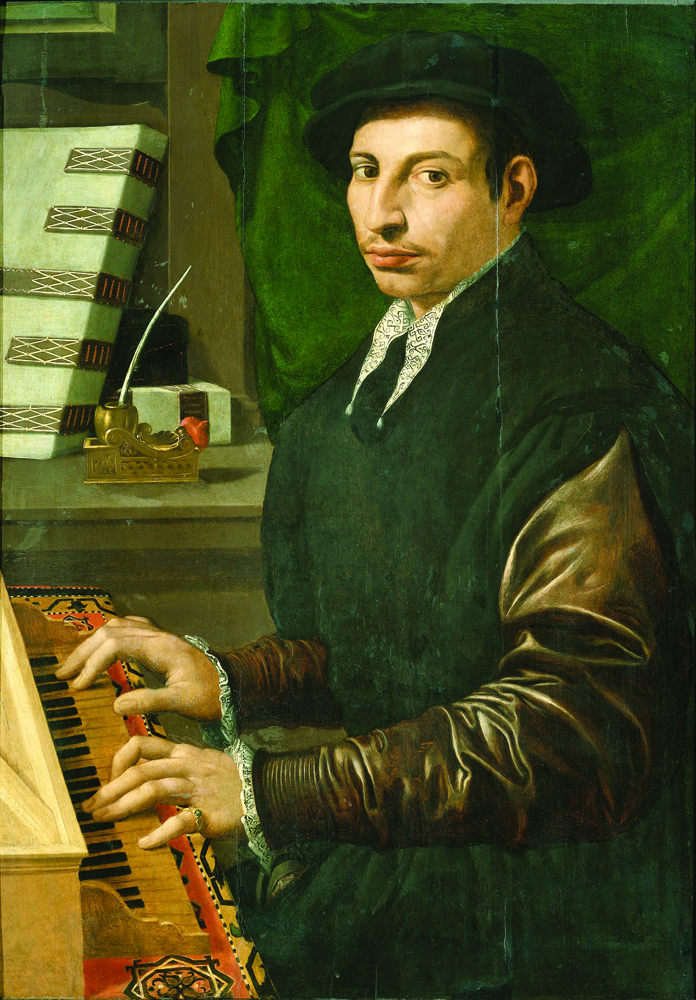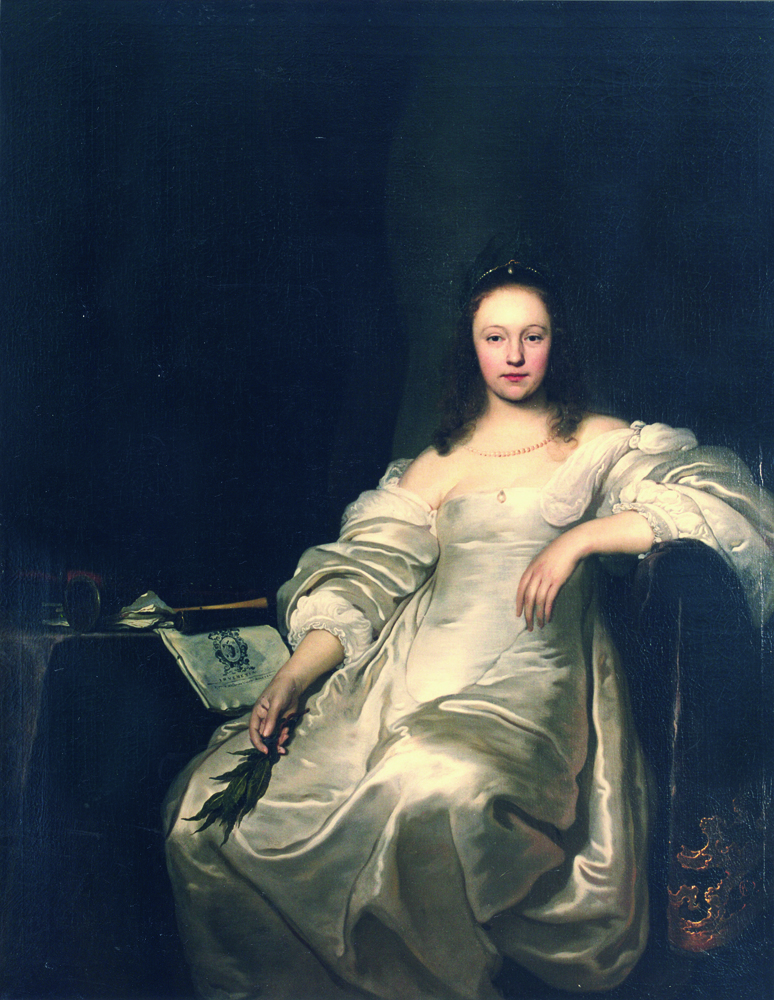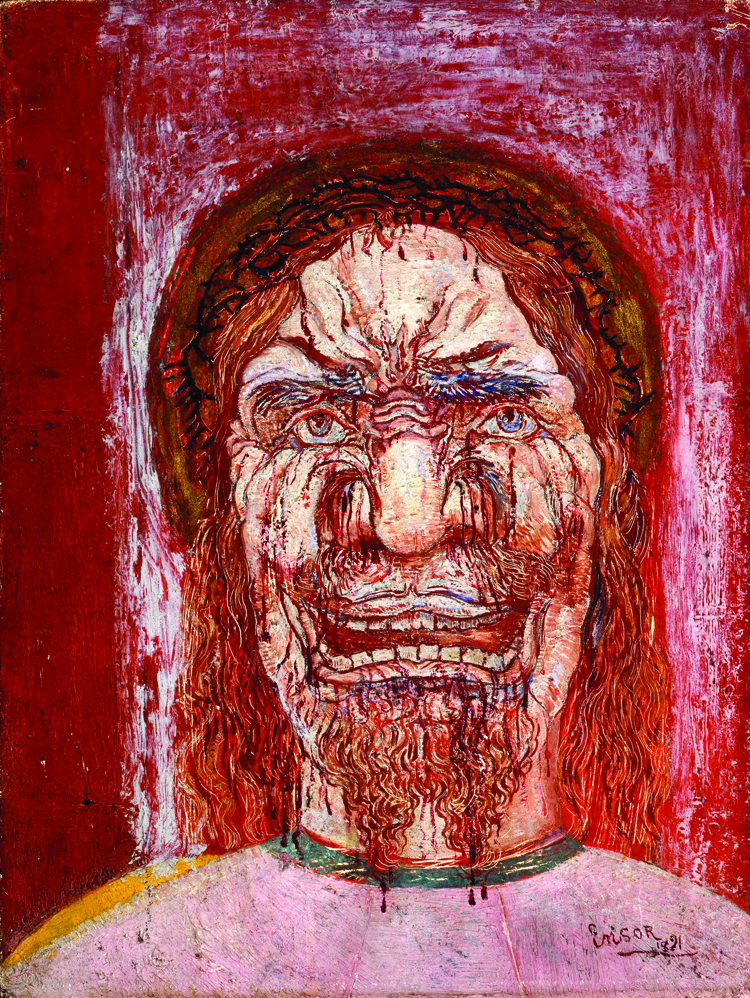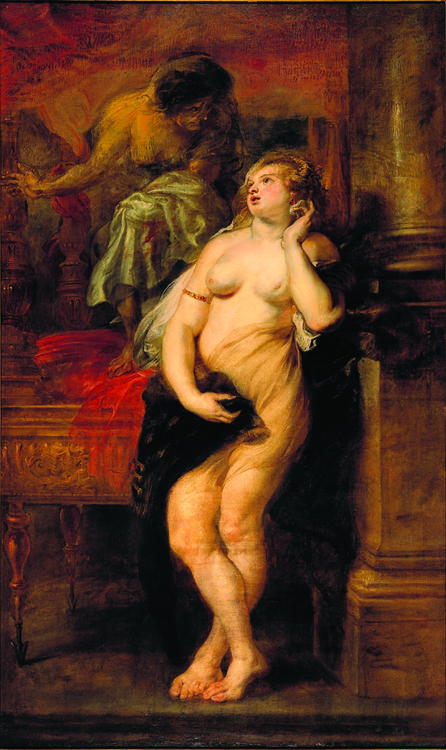The European Fine Art Fair in Maastricht has become the show of all antiques shows, attracting art and antiques world luminaries from around the globe. For those wishing to counterbalance the excitement and the throngs with more tranquil pleasures, a host of venues of superlative historical and aesthetic interest lies just a short distance away.

The Bonnefantenmuseum Maastricht is showing Italian Renaissance masterworks acquired by Dutch collectors
The relatively small city of Maastricht (estimated population: 120,000) abounds with concerts, exhibitions, lectures, and special events timed for the massive influx of international collectors, curators, and art enthusiasts who come for the fair. In addition to these temporary attractions, this ancient city boasts numerous sites of historical interest, from the part Romanesque, part Gothic Basilica of Sint Servatius (the oldest church in the Netherlands) to its medieval city walls and thirteenth-century town gate-and even, the Museumkelder Derlon, where antiquities enthusiasts can view the Roman ruins excavated beneath the functioning Hotel Derlon.
Last year the Bonnefantenmuseum Maastricht inaugurated Rijksmuseum Maastricht, an alliance between the Bonnefanten and the Rijksmuseum Amsterdam. A special display featuring masterworks from the Rijksmuseum’s permanent collection, entitled Palazzo: Collecting Early Italian Art in the Netherlands (1900-1940), showcases masterworks acquired by the important collector of Renaissance art Otto Lanz and is augmented by works acquired by other Dutch collectors during the interwar period.
The European Fine Art Fair [TEFAF] · Maastricht Exhibition and Conference Center, Maastricht, the Netherlands, March 13-22 · www.tefaf.com
Palazzo: Collecting Early Italian Art in the Netherlands (1900-1940) · Bonnefantenmuseum Maastricht, the Netherlands · through 2012 · www.bonnefantenmuseum.nl
The Belgian town of Maaseik is hosting figures from the terracotta army of Xi’an
One of the bonuses of Maastricht during the crowd-filled fair is its proximity to so many other wonderful European locations. High-speed trains mean that Paris is under three hours away (Thalys offers discounted rates for those heading to or from the French capital and the fair: www.thalys.com; promotional code: tefaf Maastricht). Amsterdam is two and a half hours by train; Rotterdam, The Hague, Ghent, and Cologne, just over two. A host of other historically rich venues are even closer to hand. Highlights of a few that can be reached in less than two hours are below.
Maaseik, Belgium (34 kilometers from Maastricht) is hosting a special exhibition of figures from the famed terracotta army of Xi’an. Fourteen life-sized warriors from the astounding terracotta army buried with China’s first emperor, Qin Shi huang, can be seen in the Minorite Church in Maaseik alongside later examples created for rulers of the Western Han dynasty. This exhibition of more than two hundred rare ancient Chinese grave items also includes objects of jade, bronze, and gold. Those hoping to investigate the indigenous charms of this Belgian town just across the Dutch border should also visit the permanent display of local archeological artifacts at the Regionaal Archeologisch Museum, one of the three museums that make up the Museactron-the others are a seventeenth-century apothecary and an old bakery. A permanent exhibition on Renaissance painters Jan and Hubert van Eyck, who were probably born in Maaseik, can be seen in the Franciscan cloister near the marketplace.
The Terracotta Army of Xi’an: Treasures of the First Emperors of China · Minorite Church, Maaseik, Belgium · through March 31 · www.museamaaseik.be

Aachen goes Dutch for TEFAF with a solo exhibition celebrating seventeenth-century artist Jacob Adriaensz Backer
The German city of Aachen (which shares its airport with Maastricht) reveres its history as the ancient capital of the Frankish kingdom, a legacy proudly on view at Charlemagne’s Palatine Chapel in Aachen Cathedral and at the Gothic city hall built on the foundations of his palace. On the eve of TEFAF, the Suermondt-Ludwig-Museum opens an exhibition of around forty paintings and twenty drawings by Jacob Adriaensz Backer, one of the most heralded artists of the Golden Age of Dutch painting, who is esteemed for his eloquent portraits as well as for his sensuous nude sketches.
The Great Virtuoso from Amsterdam: Jacob Adriaensz Backer ∙ Suermondt-Ludwig-Museum, Aachen ∙ March 12 to June 7 ∙ www.suermondt-ludwig-museum.de

56 1⁄2 inches. Galleria Sabauda, Turin, Italy.
Antwerp revels in the grotesque with an exhibition of works by Goya, Redon, and Ensor
Visitors to this Flemish city can not only enjoy its sixteenth-century guild houses and historic city hall in the Grote Markt and the Gothic Cathedral of Our Lady (Onze-Lieve Vrouwekathedraal) with its magnificent panels by local hero Peter Paul Rubens but also, from March 14, investigate the phantasmagorical visions of Francisco de Goya, Odilon Redon, and James Ensor. The Koninklijk Museum voor Schone Kunsten presents an unusual mix of works by the Spaniard, the Frenchmen, and the Belgian that points to a range of uses of grotesque imagery, from the haunting to the hilarious. The museum’s rare etchings by Goya, a pastel by Redon, and numerous Ensors (its collection is the largest in the world) are augmented by significant international loans.
Goya, Redon, Ensor. Grotesque Paintings and Drawings ∙ Koninklijk Museum voor Schone Kunsten, Antwerp ∙ March 14 to June 14 ∙ www.kmska.be

Brussels pays homage to the House of Savoy as Italy turns 150
The Belgian capital showcases its artistic legacy in a circuitous form this season with an exhibition at the Centre for Fine Arts (Palais des Beaux-Arts) in collaboration with the Vlaamse Kunstcollectie and the Galleria Sabauda in Turin. The exhibition, devoted to the House of Savoy’s collecting habits, kicks off three years of international celebrations of the 150th anniversary of Italian unification. Here, works by Flemish painters such as Jan Brueghel the Elder, Rubens, and Anthony van Dyck, as well as Brussels tapestries are revealed to be as important to royal Savoyard collecting as the Italian masters of the fifteenth through the eighteenth centuries displayed alongside them. A Turin themed arts and gastronomy festival complements the exhibition.
Those who go should not miss the more straightforward pleasures of Brussel’s fine architecture-from the medieval structures of the Grand Palace to the cutting-edge headquarters of the European Union, and numerous art nouveau masterpieces-museums, and renowned cuisine.
From van Dyck to Bellotto, Splendor at the Court of Savoy ∙ Centre for Fine Arts (Palais des Beaux-Arts), Brussels ∙ through May 24 ∙ www.bozar.be
The BADA Fine Art and Antiques Fair begins only a heartbeat after TEFAF ends
Over one hundred members of the British Antiques Dealers’ Association exhibit their antiques, fine art, and even contemporary silver and paintings at the Duke of York’s Headquarters, off fashionable Sloane Square in London, at the end of March. This year’s loan exhibition, From Jerusalem to Clerkenwell-the Magnificent Journey of the Knights of St. John, which traces the history of the order from its foundation in the late eleventh century to the present time, features the Rhodes Missal, a magnificent five-hundred-year-old manuscript that goes on public display for the first time in almost forty years.
BADA Art and Antiques Fair, London ∙ March 25-31 ∙ www.bada-antiques
-fair.co.uk
